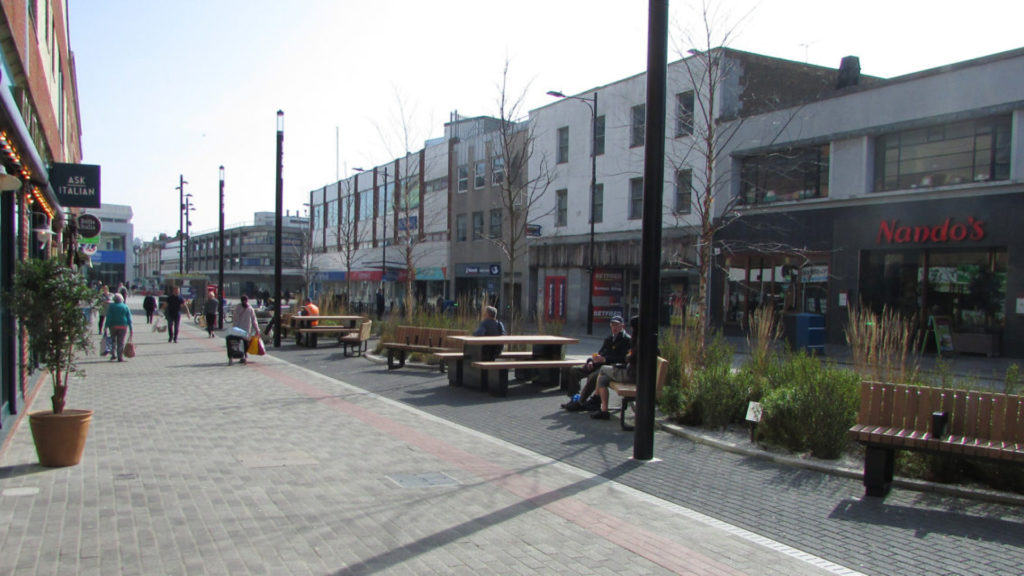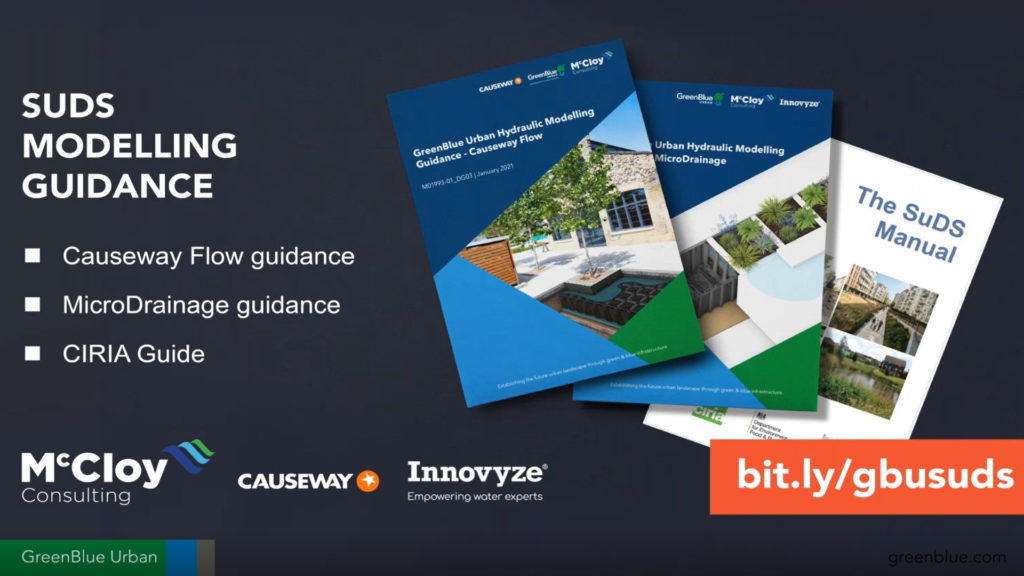Last week GreenBlue Urban had the privilege of hosting a webinar entitled “Resources for Resilience” following previous sessions where attendees has clearly signalled that there was a desire for better implementation of green infrastructure to help with climate change mitigation, but a lack in the understanding of the “how”.
 Joining us on the webinar were Jessica Fieth from the Town and Country Planning Association, Kai Liebetanz from the UK Green Building Council, Anna Oxenham from Southend-On-Sea City Council, Louise Walker from CIRIA and – all describing how their organisations were helping to provide resources tom assist with resilience.
Joining us on the webinar were Jessica Fieth from the Town and Country Planning Association, Kai Liebetanz from the UK Green Building Council, Anna Oxenham from Southend-On-Sea City Council, Louise Walker from CIRIA and – all describing how their organisations were helping to provide resources tom assist with resilience.
Starting with Jess, she clearly showed us how the TCPA has published the Climate Crisis Guide – for local authorities to help with solutions available to lead to a better and more resilient development. Local authority policies and strategies are key to the effective change to more resilient and liveable places, and takes a longer view – not just related to short term political timescales, and Jess emphasised that we need to think beyond historic boundaries and traditional solutions. A truly enlightening presentation which all found useful.
Next Kai showed us how the wide membership of the UK Green Building Council works collaboratively with a wide range of stakeholders to find compromise solutions that both help promote nature based opportunities without strangling development – without which our towns and cities will become stagnant. Kai helped us understand that we can either install/consume products/goods which benefit others or we can use alternative products which brings a cost to others. The difference between these options is what requires additional funding, which the UKGBC seeks to bridge, with green funding streams. Often these need to be specialised funders, as conventional business modelling doesn’t really work for natural based solutions, as the return on investment can be tricky to tie down.
Anna showcased the opportunities that Southend On Sea have taken up as partners with the EU Interreg 2 Seas projects – where GreenBlue Urban have also been involved. Anna is closely involved with the Nature Smart Cities project, using nature based solutions to improve the livability of urban areas by the integrated and carefully managed green infrastructure to meet the challenges brought to us by climate change, and to find innovative ways to fund these interventions. Seven different towns and cities across Europe are testing new eco-system valuation and economic analytical tools, which will more accurately help make the business model to justify investment in green infrastructure – to create a more resilient world for all us.

Case Study: Cool Towns. Southend
Louise Walker, an environmental scientist amongst other wide qualifications, showcased the work that CIRIA are currently doing to make it simpler to design, predict and justify more nature based solution opportunities. The SuDS Manual, originally published in 2007, and updated in 2015 is being currently revised to bring new experience and development into the public domain. This comprehensive publication is greatly supported by GreenBlue Urban, as being the global leading advice manual for Sustainable Drainage design and management, and to get improved information will be very helpful. The B£ST Benefits Estimation Tool) valuation software program, which gives designers the tools to get some realistic likely eco-system values from SUDS and other nature based solution provisions, has been trialled by many practitioners, and gives yet another weapon in the battle against mediocre storm water management. This should be launched later this year, and with the continual support of Sudsdrain, we are seeing true multi-functional drainage schemes bringing huge benefits.
Finishing up with our own Howard Gray who gave an overview of the resources available from GreenBlue Urban, and some of the successes that we are proud to have been a part of. Emphasising the need for collaborative working between disciplines, Howard showed the progression of GreenBlue Urban over the last 30 years, and the vision ahead through to net zero carbon by 2040, and the commitment to educating the industry. GreenBlue Urban has been heavily investing in making our knowledge available to all: publications to help design, implementation and maintenance of our critical green infrastructure, with more guidance soon to be launched. The SuDS modelling guidance available from the GreenBlue website created to assist with modelling using MicroDrainage and Causeway Flow software is a good start, but simpler and more accessible calculators are just round the corner, so keep a watch for these.
 Overall, the webinar was extremely helpful to all of us that are involved in future building and urban design – and highly encouraging that the market is moving in the right direction. Younger people are very aware of our environment and have a highly invested interest in getting it right; let’s not let them down. Creating resilient places from dated spaces – that’s GreenBlue Urban: all in harmony with nature.
Overall, the webinar was extremely helpful to all of us that are involved in future building and urban design – and highly encouraging that the market is moving in the right direction. Younger people are very aware of our environment and have a highly invested interest in getting it right; let’s not let them down. Creating resilient places from dated spaces – that’s GreenBlue Urban: all in harmony with nature.

